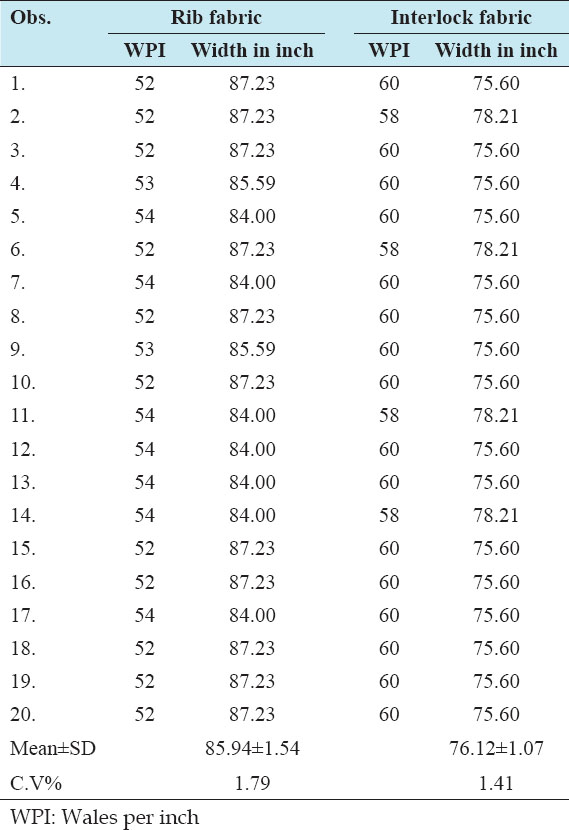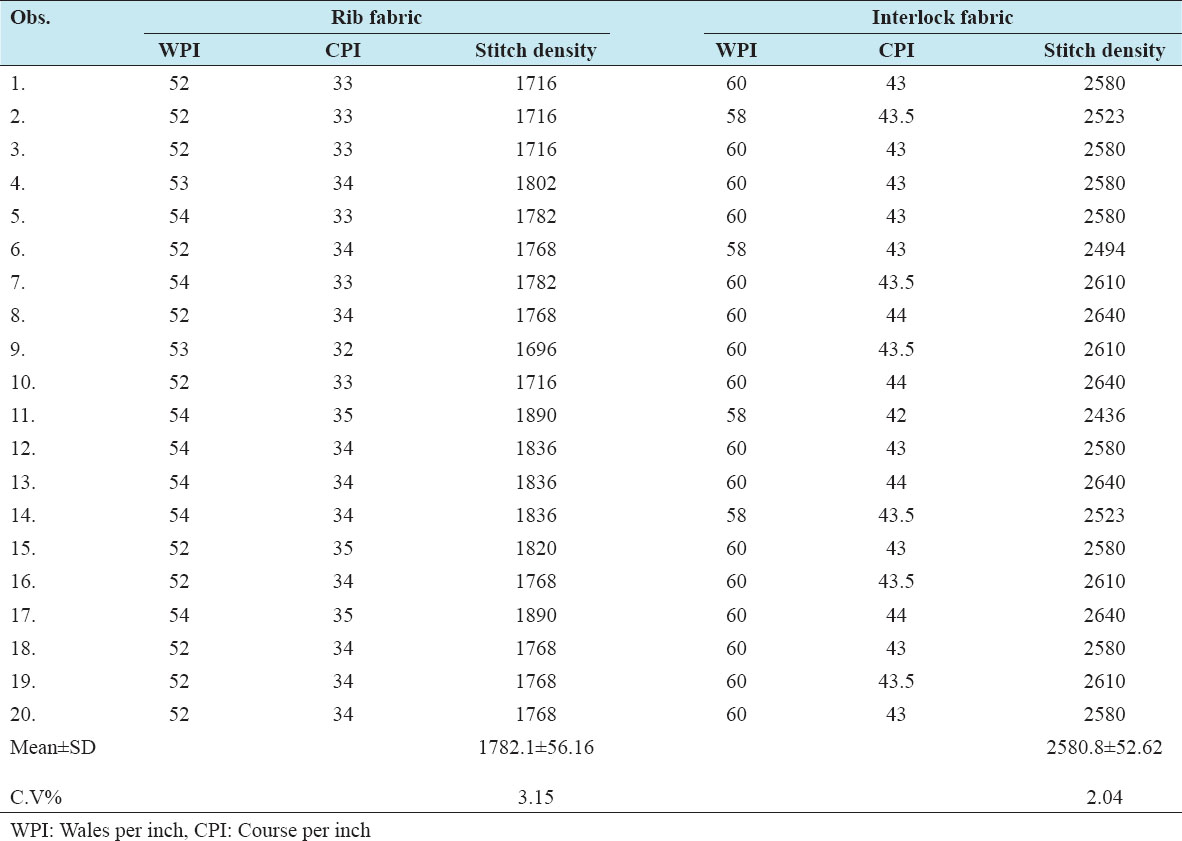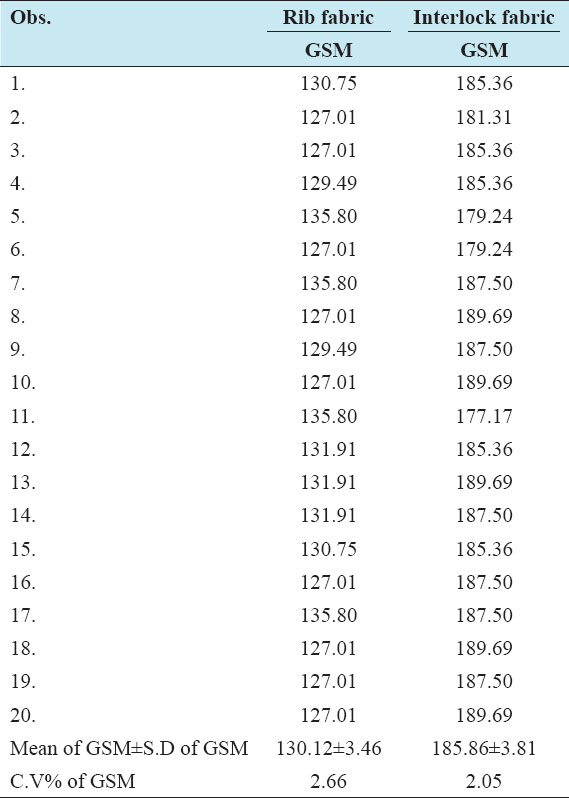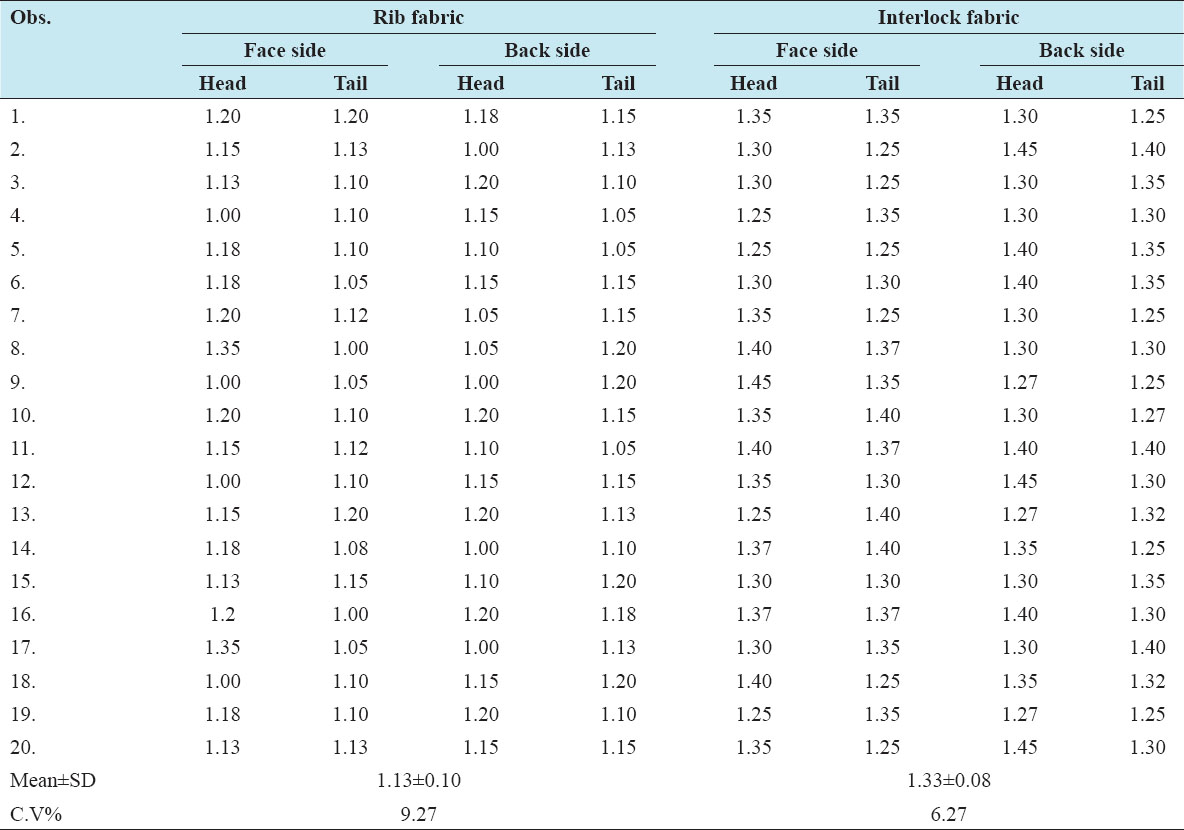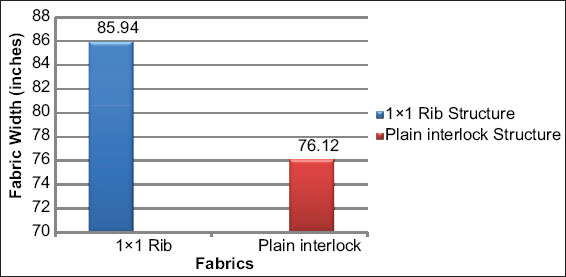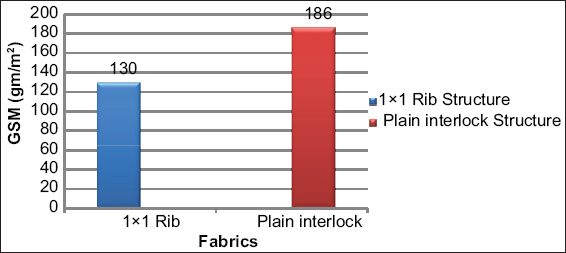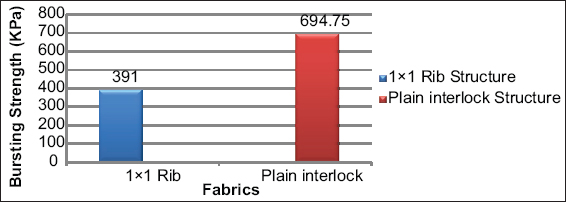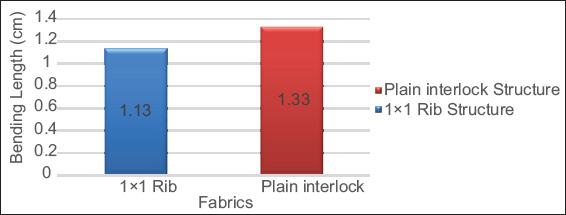Comparative analysis of physical properties of 1 × 1 rib and plain interlock fabrics knitted with same knitting parameters
Shoriful Islam1*, Shakil Mahmud2, SM Rashadur Rahman Setu3, Md. Shaulin Kabir4, Md. Abu Baker Siddique5, Abir Mohammad6, Mamun Ratul7, Md Arman Hossain8
1Merchandiser, FCI BD Limited; 2Sr. Merchandiser, Sublime Greentex Limited, Bangladesh; 3Product developer, LI & FUNG, Bangladesh; 4Executive, RnD, Liberty Knitwear Ltd., Bangladesh; 5Assistant Merchandiser, Dekko Isho, Bangladesh; 6Fabric technologist, FCI BD Limited; 7Sr. Executive, Swiss Colours Bangladesh Ltd; 8Researcher, Hochschule Niederrhein, University of Applied Science, Germany
ABSTRACT
Double jersey knitted fabric’s (rib and interlock) properties such as bursting strength, stiffness, Gram per Square Meter (GSM), and stitch density have a great influence on its end-use. The aim of this research is to investigate on physical properties of double jersey (rib and interlock) fabric having the same stitch length, yarn type, and count and which were produced in the knitting machines of the same gauge and diameter. The effect of different knit structures on bursting strength, stiffness, GSM, stitch density, and width of the fabric was found out. The results revealed that interlock fabrics have higher GSM, stitch density, and bursting strength values than rib fabrics while the rib fabrics have a higher width than interlock. It is also found that interlock fabric is stiffer than rib fabric which means rib fabric has better flexibility and drapability that significantly effects on customers end use preference. Hence, plain interlock structure is heavier, thicker, narrower, stronger, and stiffer than 1 × 1 rib structure.
Keywords: Bending length, bursting strength, draping and stiffness, fabric width, flexural rigidity, gram per square meter, interlock, rib fabric, shrinkage, stitch density, stitch length, thickness






